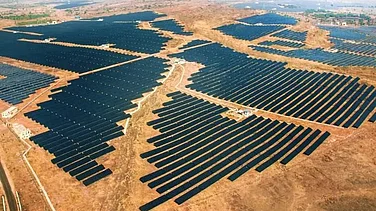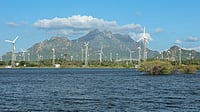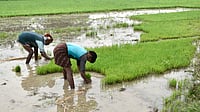The annual financial flows to sustainable agriculture was Rs 22.31 trillion in FY22, declining by 1.1% from Rs 22.47 trillion in FY21 amid growing agriculture needs, according to a report released by Climate Policy Initiative on January 28.
The report, titled Sustainable Finance Flows to India’s Agriculture Sector, also highlighted a stark disparity between domestic and international financial flows. Domestic sources represented 99.5% of flows as against a miniscule 0.5% from international sources.
Government budgets have supported sustainable agriculture, the report states. Central and state governments' allocation to agriculture averaged Rs 7,294bn during FY21 and FY22. Approximately Rs 6,400bn of the total was allocated to the sustainable agriculture activities tracked by this study.
Against the expectations of food demand rise to around 400mn tonnes by 2050, the production levels in FY23 stood at around 330mn tonnes, laying bare a five-year average growth requirement of approximately 4%, as per the report.
Need for Financial Diversification & Capacity Building
Government policies in the past have signaled a shift towards sustainable agriculture focusing on resource efficiency, food security and climate adaptation. The establishment of the Carbon Credit and Trading Scheme (CCTS) is also a significant step towards sustainable agriculture, the report stated. The aim of the scheme is to create a regulatory framework for carbon credit trading and mandate high-emission sectors including agriculture to purchase credits.
However, the financial flows for the same still remain heavily skewed, with 67% coming from private sources and 33% from public sources. There is a need to diversify the sources and encourage underrepresented actors like development financial institutions, philanthropies, private equity and venture capitalists.
The report highlighted the lack of a comprehensive taxonomy that encompasses different agricultural activities, geographical conditions and climate risks. India’s diverse agricultural activities and sectors should be evaluated consistently, with their performance calibrated against sustainability and climate challenges. This should be included in the proposed climate finance taxonomy to ensure effectiveness and feasibility.
The report also emphasised on the need of building robust systems for data collection and reporting in the sector while also promoting digital platforms for real-time data on crop yields, weather and soil health.
For capacity building, the report suggested expanding training for farmers, policymakers and financial institutions on sustainable practices, and providing region-specific, mobile-accessible programmes in local languages.


























